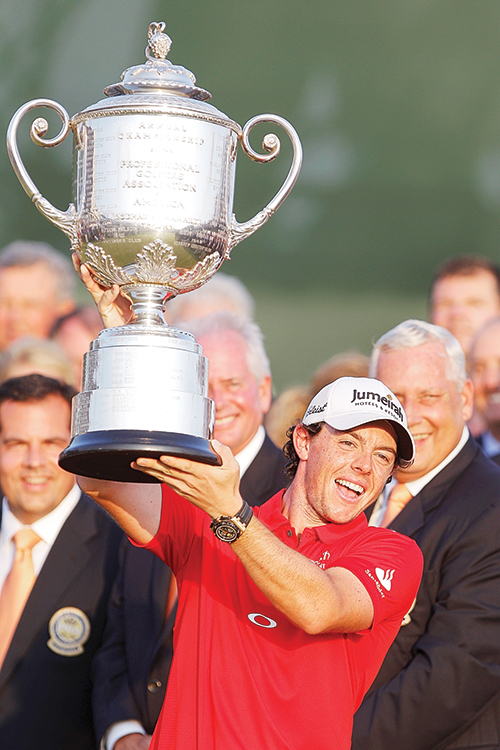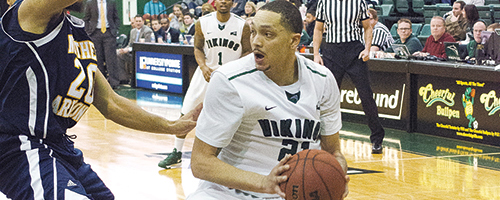Fans tend to equate achievement in sports with direct success on the field, celebrating athletes for their victories and titles and transcendent performances. Athletes, on the other hand, rarely share those idealistic notions of what it means to be the best in their sport over the course of a career. Lured more by a bump into a new tax bracket than the chance at a championship, players will often make every effort to capitalize on their name in the pursuit of cross-promotional fortune, endorsing a slew of products, making film cameos and releasing ghostwritten bestsellers.
Basement Notes: McIlroy cashes in

Fans tend to equate achievement in sports with direct success on the field, celebrating athletes for their victories and titles and transcendent performances. Athletes, on the other hand, rarely share those idealistic notions of what it means to be the best in their sport over the course of a career. Lured more by a bump into a new tax bracket than the chance at a championship, players will often make every effort to capitalize on their name in the pursuit of cross-promotional fortune, endorsing a slew of products, making film cameos and releasing ghostwritten bestsellers.
Rory McIlroy recently provided a reminder of what it really means to be a successful professional athlete when he signed a multiyear endorsement contract with Nike, believed to be worth upwards of $200 million. The exact numbers have been closely guarded, but whatever the final figure turns out to be, the deal has established McIlroy as the most influential young golfer on the planet, a designation not entirely dependent on how well he plays golf.
Of course, endorsements are not necessarily bad. The shampoo that Troy Polamalu uses or the pantyhose Joe Namath wears have no real effect on their careers. And it is difficult to fault an athlete for trying to make the most of a finite window of earning opportunity. But it is also easy to wonder if the athlete’s best interests, beyond the extra income, are being considered. Shooting a commercial for a sports drink is one thing, but a move from one equipment sponsor to another, endorsing the products that can make or break an athlete, is about so much more than the dollars it brings in.
Without the proper on-field equipment, an athlete can put his or her skills—or even health—in serious jeopardy. Like a violinist with a vintage Stradivarius, elite athletes combine innate skill with countless hours of training, learning the nuances of the tools of their trade in order to produce sublime performances. That comfort and familiarity with the equipment, knowing exactly how each subtle movement will affect its performance, is one of the most crucial factors determining whether all those of hours of practice will pay off as intended.
McIlroy, the two-time major winner whose move from Titleist to Nike was announced with great fanfare in Abu Dhabi before the HSBC Championship, was more than willing to ditch his old clubs wholesale to please his new paymasters. His story is far from uncommon in the annals of his sport, the main difference being that the Northern Irishman’s deal is exponentially larger than those of most other golfers who swap allegiances.
And the phenomenon is certainly not unique to golf. Novak Djokovic, currently the top-ranked men’s tennis player in the world, struggled when he switched from Wilson to Head rackets before the 2009 season. He eventually adjusted to his new equipment, winning five Grand Slam titles since the switch and breaking up the long-standing Federer/Nadal duopoly in the men’s game. But not everyone enjoys such benefits.
Grant Hill, the former Duke standout who in the mid-1990s was the heir apparent to Michael Jordan for the title of the NBA’s best player, signed a seven-year, $80 million shoe contract with Fila before the 1997–98 season. Hill subsequently experienced a series of chronic ankle problems that kept him from achieving the dominance expected from him. No definitive correlation was found, but much speculation was made that Hill’s injury woes could have been precipitated by his newly acquired footwear. While his agent vehemently denied the hypothesis throughout the remainder of the deal, it is perhaps telling that Hill made the switch to Adidas and later Nike during the waning years of his career.
Examples can be found on both ends of the spectrum, and the odds favor McIlroy to win at least a few more majors before his days as a golfer are done. Swapping out the clubs in his bag and the ball on the tee is unlikely to destroy his chances of making his mark on the sport. Still, McIlroy made a clear cost-benefit analysis and determined that a nine-figure payday was ultimately more valuable than familiarity with his equipment as he enters the prime of his career, a decision that is never without risk. It was merely the latest example of the clear divide between how success in sports is defined by those on the field and those in the stands.




